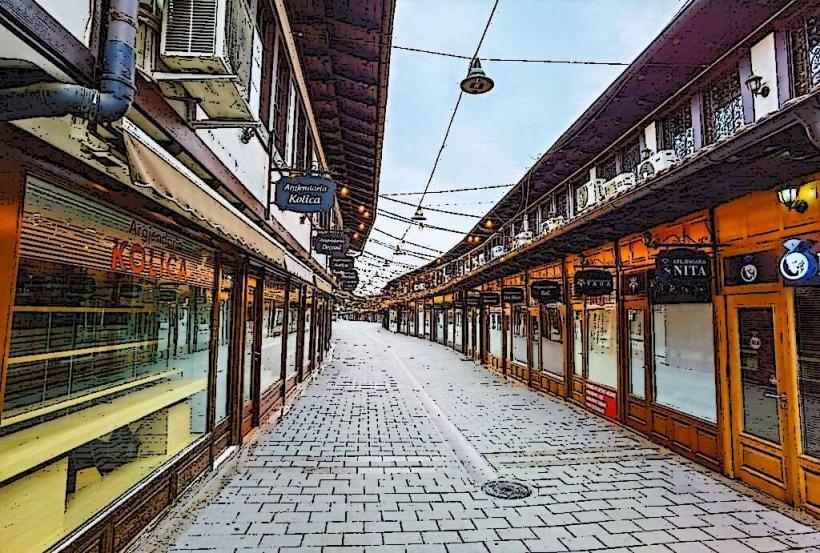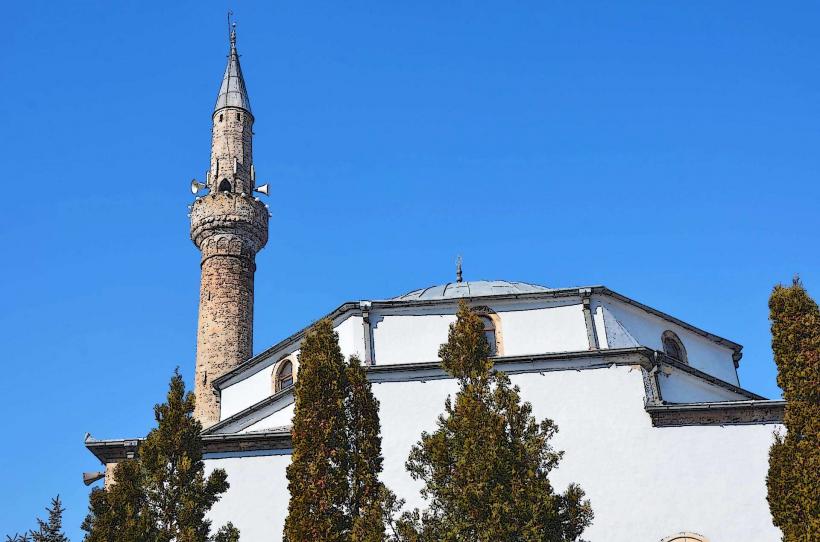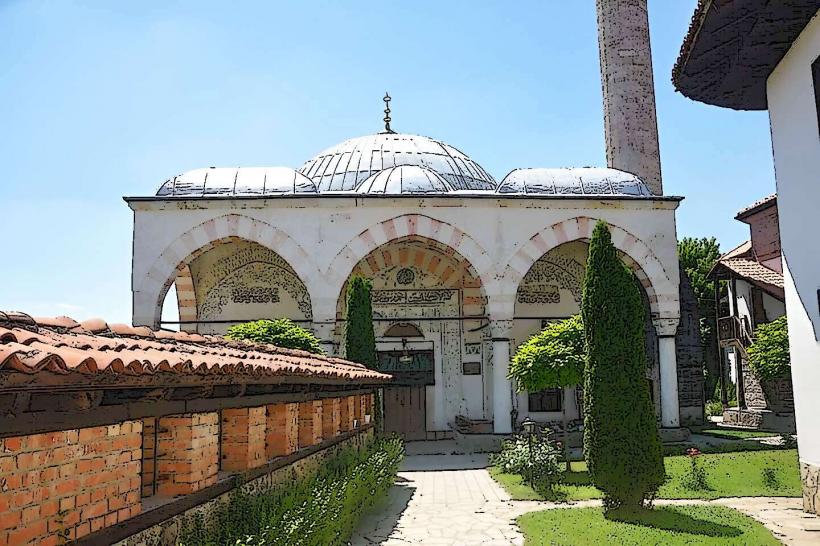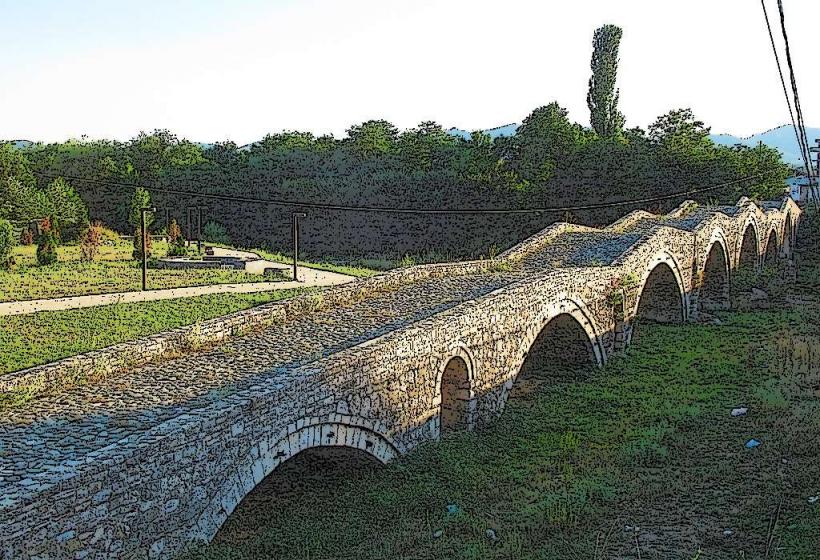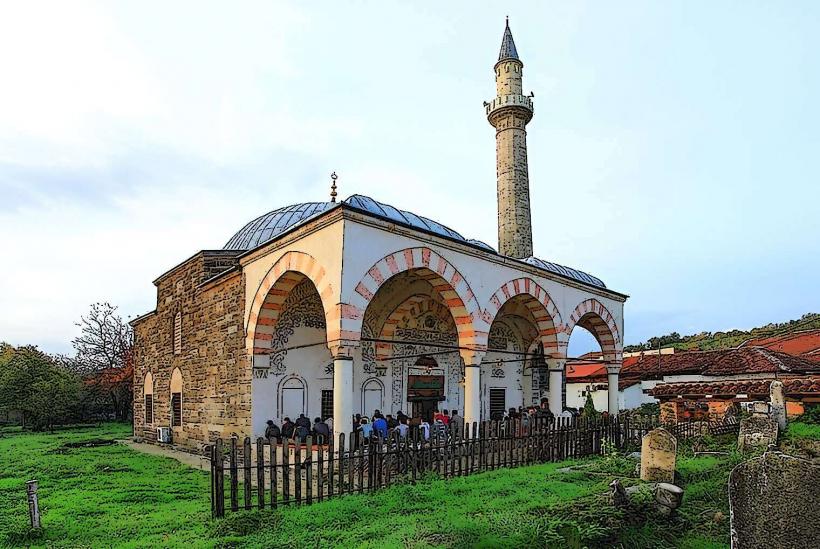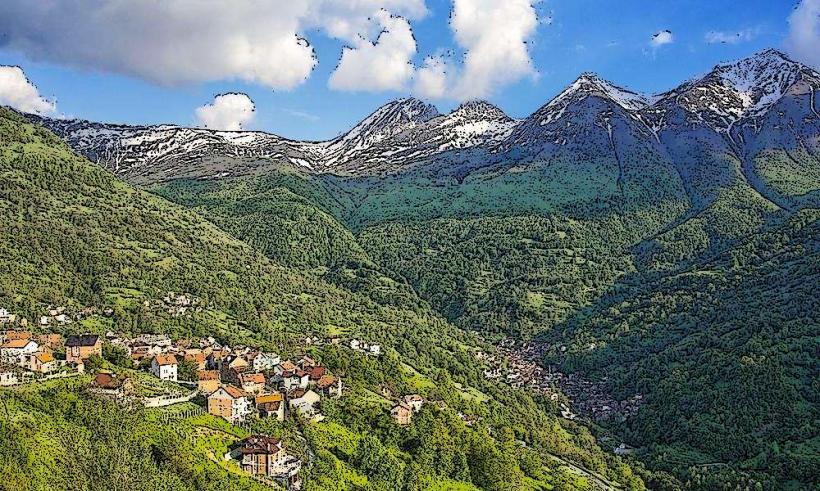Information
Landmark: Patriarchate of Peć MonasteryCity: Pec
Country: Kosovo
Continent: Europe
The Patriarchate of Peć Monastery (Serbian: Pećka Patrijaršija) is one of the most significant religious and historical landmarks in Kosovo. Located near the town of Peć in western Kosovo, this monastery is not only an important religious site for the Serbian Orthodox Church but also a key symbol of the medieval history of the region. It holds a special place in the spiritual, cultural, and historical identity of Kosovo and the Serbian people.
Historical Background
Founding and Origins: The monastery was established in the 13th century during the reign of King Stefan Nemanjić and later became the seat of the Serbian Patriarchate. It was built as a spiritual center for the growing Serbian Orthodox community, which at the time was gaining political and cultural strength in the Balkans. The monastery complex has been associated with the Nemanjić dynasty, the Serbian royal family that played a key role in the establishment of medieval Serbia.
Religious Significance: Over the centuries, the Patriarchate of Peć Monastery served as the most important religious institution for the Serbian Orthodox Church. It became the seat of the Serbian patriarchs in 1346, following the establishment of the Serbian Patriarchate by King Stefan Dušan. The monastery remained the primary ecclesiastical center until the 18th century when the seat of the patriarchate moved to Belgrade.
Role During the Ottoman Period: Despite the Ottoman conquest of the Balkans in the 15th century, the Patriarchate of Peć Monastery continued to function as an important religious and cultural institution for the Serbian Orthodox community. It was under Ottoman control for several centuries but remained a symbol of Serbian identity and resistance.
Modern Era: Today, the monastery continues to be a significant religious center for Serbian Orthodox Christians. It is a UNESCO World Heritage site, recognized for its historical and cultural value, particularly as a symbol of the Serbian Orthodox Church's legacy in the region.
Architectural Features
The Patriarchate of Peć Monastery is renowned for its exceptional architecture, which combines Byzantine and Serbian medieval styles. The complex consists of four churches, each with its own historical and artistic significance.
Church of St. Demetrius: The oldest church in the complex, built during the reign of King Stefan Dušan (mid-14th century). It has an impressive exterior and interior, with beautiful frescoes depicting scenes from the Bible and the lives of saints.
Church of the Holy Apostles: This church was built after the Church of St. Demetrius and is known for its medieval frescoes, which provide a remarkable insight into the religious and artistic life of the period. The church is dedicated to the apostles and contains portraits of the Serbian kings.
The Church of St. Nicholas: The largest and most impressive of the churches, it served as the main church of the monastery. It is known for its beautifully painted frescoes and iconography, which depict various saints, biblical scenes, and Serbian rulers. The church’s frescoes are considered to be some of the finest examples of Serbian medieval art.
The Church of St. Paraskeva: Built at a later date, this church is known for its simple yet beautiful design. It is smaller in comparison to the other three churches but adds to the overall spiritual atmosphere of the monastery complex.
Frescoes and Iconography
The frescoes within the churches of the Patriarchate of Peć Monastery are one of the most significant aspects of its artistic heritage. They are considered masterpieces of Serbian medieval art and are renowned for their vivid color, intricate detail, and religious significance. The frescoes illustrate key events from the lives of saints, as well as the history of the Serbian Orthodox Church. Many of the frescoes were painted by Greek and Serbian artists from the Byzantine and Serbian medieval traditions.
Significance and Legacy
Religious Importance: The monastery is a deeply important site for the Serbian Orthodox Church. It was the seat of the Serbian patriarchs for centuries, making it a central institution in the religious life of the Serbian people. Today, it remains an active religious site and a place of pilgrimage for Serbian Orthodox Christians.
Cultural Heritage: The Patriarchate of Peć Monastery is a symbol of the rich cultural and spiritual heritage of Kosovo. It embodies the history of the Serbian medieval state, which flourished under the Nemanjić dynasty, and continues to be a key cultural symbol for the Serbian people.
UNESCO World Heritage Site: The monastery complex was designated a UNESCO World Heritage site in 2006 as part of the Medieval Monuments in Kosovo. This recognition highlights the exceptional cultural and historical value of the monastery and its significance in the wider context of Balkans history.
Challenges and Controversy
The Patriarchate of Peć Monastery has faced various challenges over the years, particularly following the conflict in Kosovo during the late 1990s. The area around the monastery has been the subject of political and ethnic tensions, as Kosovo has moved towards independence, with some local groups questioning the monastery’s significance to Kosovo's Albanian population. The monastery has been a target of occasional attacks and vandalism, but it continues to be a symbol of resilience and religious devotion for many.
Modern Context
Cultural and Religious Tourism: The Patriarchate of Peć Monastery remains an important destination for both religious pilgrims and tourists interested in Kosovo's cultural history. Visitors come to see the frescoes, learn about the history of the monastery, and experience its tranquil atmosphere.
Continued Religious Role: Today, the monastery continues to function as a place of worship, with regular church services and ceremonies taking place. It also serves as a center for religious education and the preservation of Serbian Orthodox traditions.
Conclusion
The Patriarchate of Peć Monastery is a profound symbol of Serbian Orthodox Christian heritage and a masterpiece of medieval architecture and art. Its rich history, remarkable frescoes, and role as a spiritual center make it one of the most important landmarks in Kosovo. Despite challenges, the monastery remains a beacon of faith, culture, and history, both for the Serbian Orthodox Church and the broader regional heritage.

